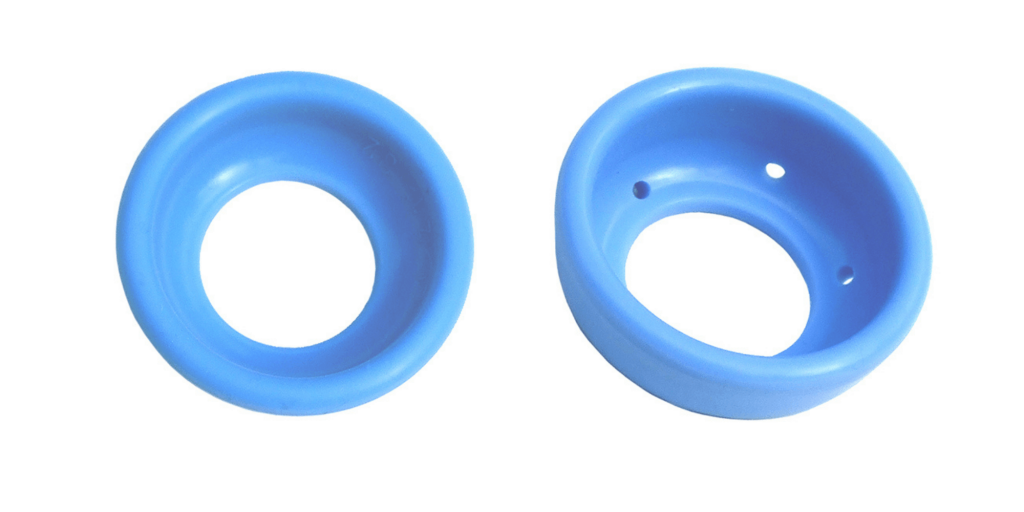The ARABIN® pessary
A complete guide

Spontaneous preterm birth – caused by cervix incompetence – is a global issue, that affects millions of mothers every year. However, ample research has now shown, the insertion of an ARABIN® pessary can help to prevent such preterm births and their consequences.
Here we take a closer look at how these pessaries work and who they are suitable for.
What is an ARABIN® pessary?
An ARABIN® pessary – also known as a cervical or cerclage pessary – is a small and flexible silicone device, which can be folded and inserted through the vagina, into the cervix.
The pessary doesn’t close the cervix completely, but rather supports it and reduces cervical tension by changing the utero-cervical angle. Ultimately, this support prevents the cervix from shortening and dilating (opening) – and therefore, reduces the chance of premature labour.
Non-perforated cerclage pessaries can be used and easily removed for cleaning if necessary. But ideally, manipulations of the pessary should be avoided as much as possible – and perforated versions are available, which allow discharge to pass through without the need for removal.
Indications for the ARABIN® pessary
The ARABIN® pessary has been developed and registered to prevent preterm birth in women with:
- a history of premature labour
- cervical shortening
- overdistension (due to polyhydramnios or multiple pregnancies)
- prolapse
- signs of physical strain (e.g. due to prolonged standing)
But it can also be indicated for patients with placenta previa (i.e. a low-lying placenta that covers the cervix), to help stabilise the lower uterine segment.
Indication and application should always be carried out by an experienced obstetrician, who is familiar with cervical pessaries and the prevention of preterm birth. And before insertion, the patient should be carefully examined to rule out any concerning contraindications.
Contraindications of the ARABIN® pessary
In some circumstances, the ARABIN® cerclage pessary will not be suitable for the patient. For example, it should never be inserted if:
- preterm rupture of membranes has been confirmed (i.e. the patient’s waters have broken)
- the patient is experiencing symptoms of preterm birth (e.g. active regular contractions)
- chorioamnionitis is suspected
- the patient has a prolapsed uterus (grade III)
- the patient has a bicornuate bicollis uterus
- vaginal bleeding has been detected
What’s more, a cerclage pessary may also need to be removed early if the patient starts to experience painful contractions or the membranes rupture – otherwise, cervical lesions and bacterial infections (such as chorioamnionitis) may occur.
How to insert a cervical pessary
If the patient is a suitable candidate for a cervical pessary, the first step is to perform a bacterial swab. Increased discharge is a common side effect of any pessary therapy and is usually nothing to worry about. But if discharge does occur, the swab results can be used to exclude the possibility of an infection or a change in the vaginal microbiome.
Cervical pessaries need to be inserted whilst the patient is in the recumbent position, and the curvature of the pessary must face upwards – so that the largest diameter is supported by the pelvic floor. Simply fold the pessary and push it gently into the vagina, until the vaginal vault has been reached. Then, push the pessary as high as possible, so that the whole cervix is surrounded by the upper ring diameter.
If the pessary has been correctly placed, the patient should be unable to feel the pessary when they stand up and symptoms of prolapse are likely to have been immediately eased. The patient will then need to be re-examined a week later, to check the device is still in the same position.
Cervical pessaries, such as the ARABIN® pessary, can usually remain in place until about 37 weeks gestation. Or if a caesarean delivery is planned, it can be removed in the operating theatre. If the pessary is stuck (e.g. due to oedema, prolapse etc.), atraumatic episiotomy scissors will need to be used to cut one side and remove the device without causing any lesions.

Cerclage pessaries at Digitimer
As a leading online supplier of urodynamic products, here at Digitimer, we currently stock both non-perforated and perforated cerclage pessaries in a diverse range of sizes. These are priced very competitively and are all available for immediate delivery.
Further information on each can be found on their respective product pages. But if you have any questions about our ARABIN® cerclage pessaries, or any of the other pessaries available in our store, you’re welcome to contact us at any time. We’re not medically trained, but we do know our products very well and we’re always happy to help. Just give us a call on 01707 328347 or send an email to [email protected] and we’ll get back to you.




